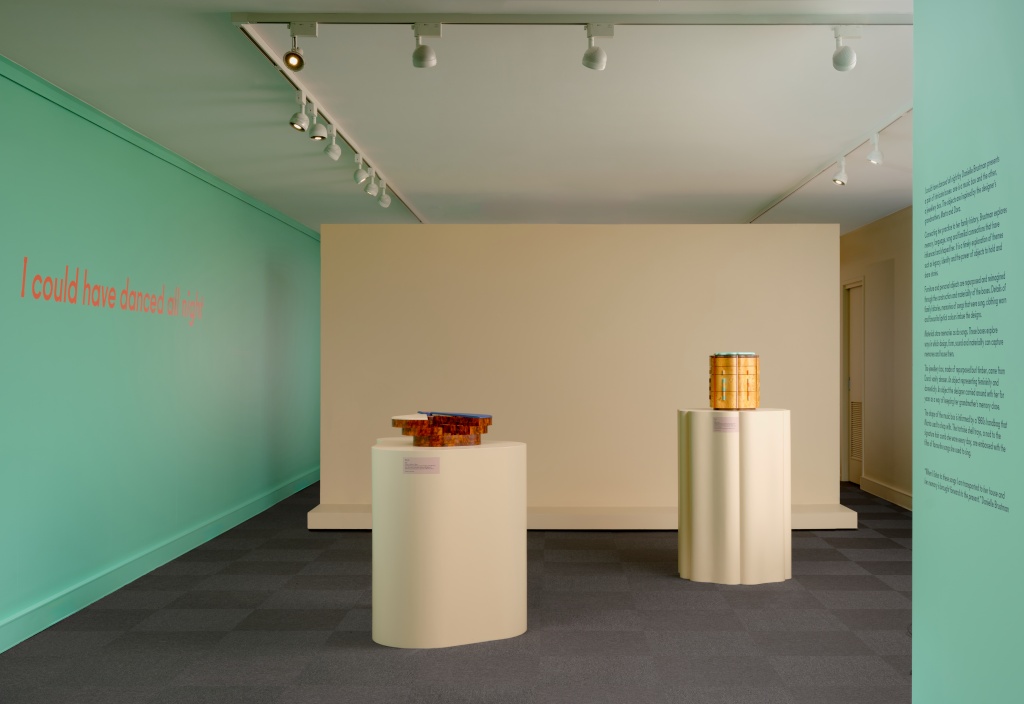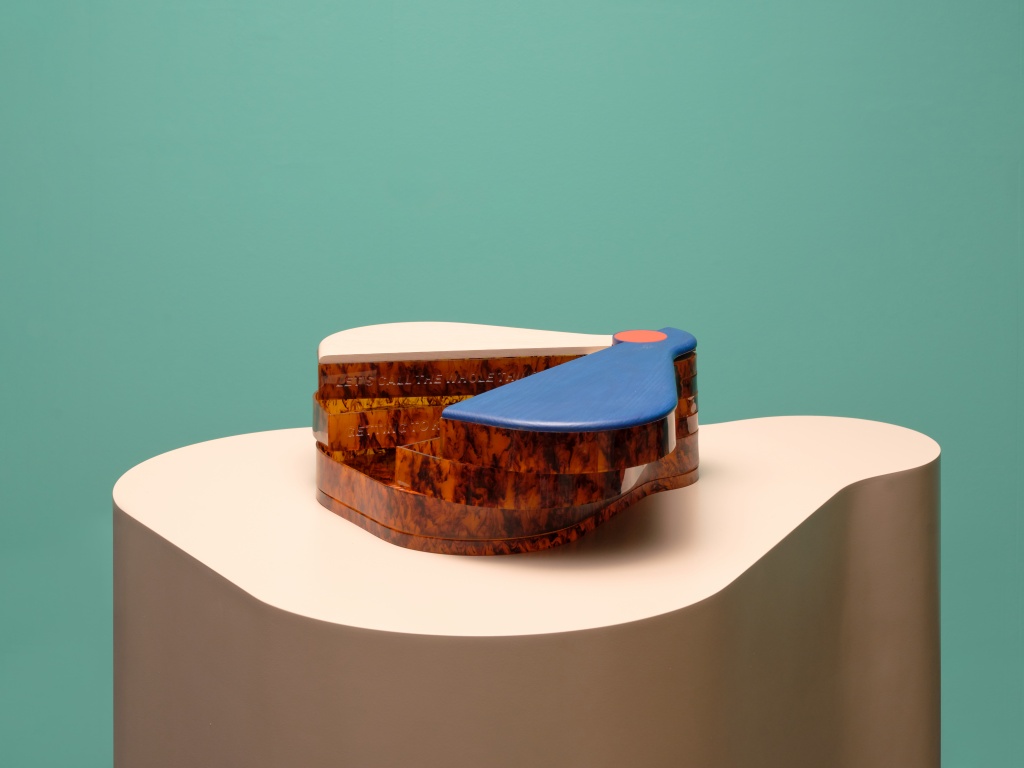I always had an inherent interest in design.
I do think that my love of design and art is innate. It’s been present, you know, from childhood. But then there has also been an environment created by certain members of my family that have really fostered and facilitated that. So, I have these lovely memories of being a young teenager with my dad and we used to spend the day on Sundays, driving around looking at interesting buildings. And that was my favourite thing to do. That’s a key memory for me.
Another strong memory I have, which you can see in the in the slideshow in the exhibition, is that I spent a lot of time with my grandmother, growing up at her house, and she lived in this wonderful 1960s home where there was all this fantastic graphic wallpaper and interesting 60s inspired design. That was a very magical house for me. I even think there’s a photo of her bathroom in the slideshow, and the bathroom tiles are red and blue and circular and it’s very graphic, and sometimes I think to myself that perhaps my whole design career is really just trying to recreate that bathroom.
Good design, for me, is about the way it makes its user feel, and I think people have different sensibilities and sensitivities about that.
Some people are more visual, some people are more sensorial, some people are more tactile, and some people are more spatial. Design affects people and spatiality affects people in different ways. But ultimately, it is about enhancing someone’s experience of space.
I was always interested in graphic design. I was always interested in architecture and in interiors. But the reason that I chose to study interior design was really because when I finished school, the lecturer who came to speak to us about the interior design course just really captured my imagination – the way that they described the course really appealed to me, that’s why I chose interior design.
My first client as an interior designer was a friend of mine, and they owned a pub in Brunswick – a big old rambling Victorian pub.
Upstairs were all these empty, beautiful, rooms. They decided that they wanted to turn it into an art deco inspired salon bar, and he asked me if I would like to do the fit out. It was an exciting gig to get, especially as my first real interior design job. I had just come out of working for about 10 years as a set designer in theatre, I employed similar skills and devices that I had used in theatre – the use of colour being one. Every room had a beautiful and bold colour scheme, as well as Art Deco-inspired murals that were painted all over the walls. I sourced second hand furniture, and then found all this amazing fabric and reupholstered cane lounge settings. I bought beautiful art deco lights and lamps from various places out in the middle of nowhere and online. It was a real labour of love.
I’ve had the opportunity of working on many great projects that have been both commercial as well as artistic. The biggest and the most significant one, I suppose, was. The Rigg Design Prize, hosted by the National Gallery of Victoria. Every three years, 10 finalists are chosen from across Australia to present their work at the NGV in a different design medium and this one was interior design. I was selected amongst a group of 10 other interior designers, all of whom were very established and I was the emerging unknown person in that mix. It gave me this wonderful opportunity to really think about what was important to me as a designer and create a large-scale installation about ‘domestic living ‘. It gave me an opportunity to show my work to a broad audience. It also opened me up to the possibility of being able to not only work for clients as an interior designer, but also create work to exhibit in gallery and museum settings.

Being presented with the opportunity to exhibit my work at the Jewish Museum of Australia was a proposition for me that meant presenting something that was very personal, something that was at the core really, of who I am and where I come from. The idea for I could have danced all night just came really quickly, actually. When I think about my own Jewish identity, it is about my family and it’s about my childhood. And this idea of talking about both of my grandmothers, and their influence on me just seemed like absolutely, the right thing for me to do.

Dora (Jewellery Box) 2024 by Danielle Brustman. Photo courtesy of Pier Carthew.
The Music Box was pretty clear, because being with my grandmother in her home, a lot of my thoughts and memories of her revolve around music. She just used to sing all the time, and she filled the home with song and dance. And then with my other grandmother, I didn’t necessarily think to start out making a jewellery box. I did decide quite early on that the box that I was going to make representing her was going to be made of this old vanity dresser that she owned and that I had for many years. The nature of a vanity dresser is that it’s such an intimate object. She would have sat down each day to, brush her hair or put on her makeup, or just sit with herself and her reflections. I feel that there is a sense of that with the Jewellery Box as well. The Jewellery Box is made of the drawers from that vanity dresser and the shape of those drawers has dictated the design. Each drawer is representative of one of her siblings, her parents and her husband. There is also a mirror, in the same way that a vanity dresser has a mirror. You can open it up and see your own reflection. And I’ve embossed this with the Hebrew letter ‘dalet’, which is the first letter of her name.

Marta (Music Box) 2024 by Danielle Brustman. Photo courtesy of Pier Carthew.
There’s a soundtrack that I’ve put together that goes alongside the slideshow in the exhibition, which comprises of the songs my grandma used to sing. And then there’s another soundtrack that is made up of Yiddish folk songs that I learned at primary school. I’ve found that recently I keep singing them all the time. It’s just this very immediate vehicle to connect with memory.
Creating this work has been a very meaningful experience for me. What’s interesting is the way it has been received by other people and to hear their feedback and reflections about their own grandmothers as well. This has been so moving.
It’s felt like that lovely saying, which is: what comes from the heart, speaks to the heart.
Danielle Brustman as told to Noè Harsel, 2024.
I could have danced all night by Danielle Brustman is open now at the Jewish Museum of Australian until 09 March 2025.